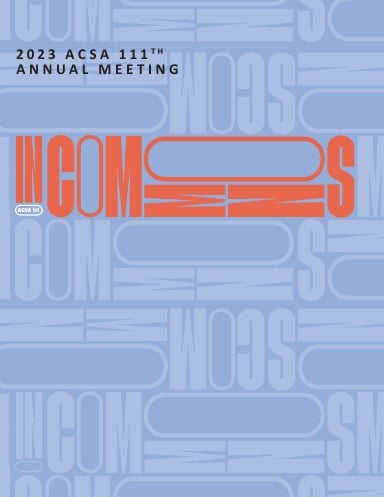Author(s): Nate Imai & Matthew Conway
This paper examines how the intersection of real-time data and material assemblies provides novel opportunities to understand our built environment as a socially and ecologically constructed milieu. By integrating the Internet of Things (IoT) with brick-and-mortar buildings, we can create dynamic interfaces that leverage our material surroundings to contextualize a range of unseen information, such as where scholarship is being conducted, from which direction the wind blows, and what community members are posting. In framing buildings as not separate entities from growing online networks but inextricably connected to them, this investigation proposes a design methodology that blends computational design with construction methods to create interfaces that recursively integrate real-time information with the built environment, adding digital information as another material alongside concrete and wood in an expanding architectural palette. By analyzing three design projects, this paper documents design methods that synthesize real-time data with material assemblies to provide an expanded reading of our built environment. The first is a gallery installation that locates live Wikipedia updates through an arrangement of fabric, light, and sound. The second is a digitally fabricated tea house that integrates temperature, humidity, and airflow data in the design of an interactive facade. The third is a public art project that connects one local ethnic enclave with others across the globe through the display of social media imagery in real-time. Through their interactivity and materiality, these projects seek to connect users more deeply with their surroundings, and in doing so, encourage an attitude of action, engagement, and empathy within our built environment.
https://doi.org/10.35483/ACSA.AM.111.22
Volume Editors
ISBN
978-1-944214-41-8

 Study Architecture
Study Architecture  ProPEL
ProPEL 
